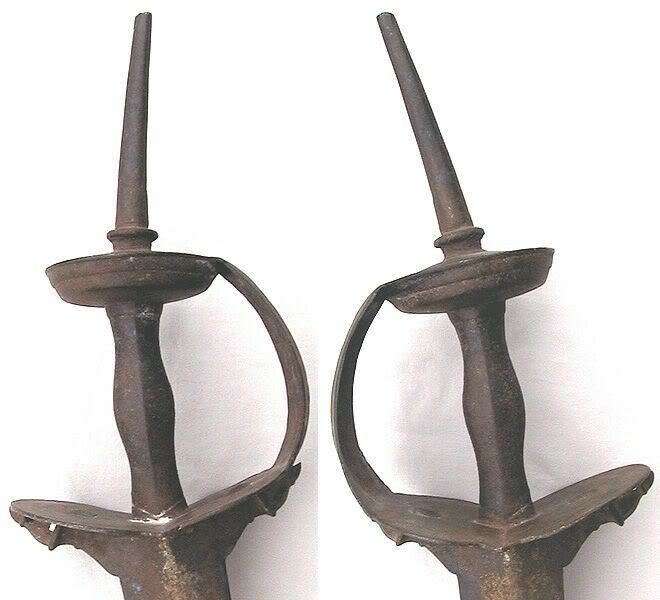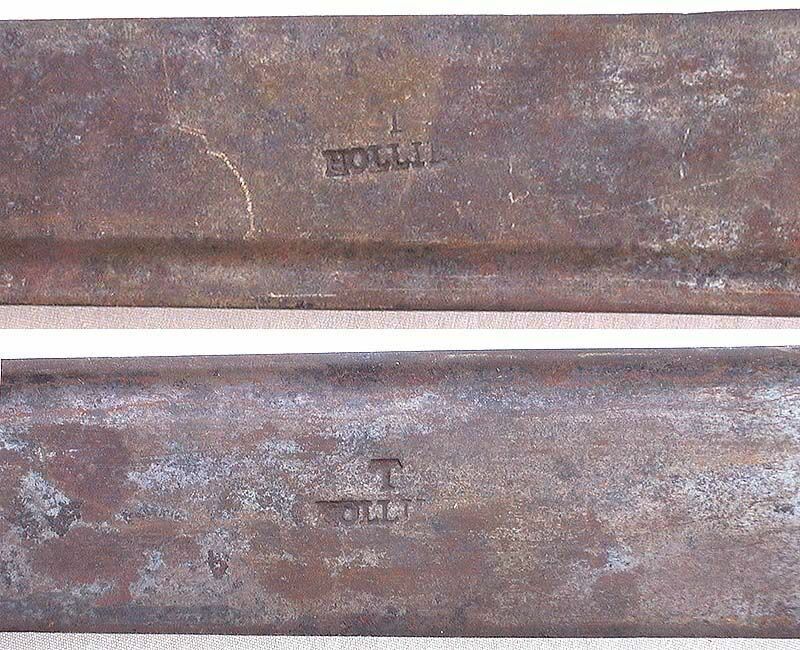
 |
|
|
#1 |
|
Vikingsword Staff
Join Date: Dec 2004
Location: The Aussie Bush
Posts: 4,613
|
I have had this one for some time and it is in the original state that I received it. It has a traditional Indian basket hilt and a long straight blade on which is stamped a letter "T" over a name "HOLLI.." I have been unable to find a maker that corresponds to this mark. Anyone have suggestions?
Any idea of when this sword was made? Here is an overall view of the sword:  The Indian basket hilt:  And the markings on the blade:  Ian. |
|
|

|
|
|